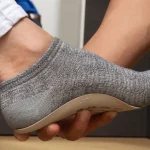The Lenzing Group unveiled a plan Monday that ties its growth to increasing the share of specialty fibers – including its Modal and Tencel fibers – to 50 percent of its revenue by 2020 to meet growing global demand amid growing resource constraints.
The Austrian textile company said the plan seeks to leverage Lenzing's competitive advantage in making cellulosic, or wood-based fibers, which originate in sustainably managed forests, are
produced in an environmentally-friendly manner and are biodegradable. Taking all parameters into account, Tencel is
up to 17 times more environmentally compatible than other fibers, Lenzing claims.
Many outdoor and athletic brands have blended Lenzing fibers with cotton and
polyester to improve their sustainability.
Forecasts call for a rise in per capita textile consumption in the emerging markets by all in all 50 percent in the period 2010 to 2020. In the industrialized countries the nonwovens industry, an important sales market for Lenzing, will profit from the increased demand for hygiene products. The nonwovens segment is expected to expand twice as fast as the textile market.
The new strategy aims in part to generate sustainable growth with specialty fibers such as Lenzing Modal or Tencel. Five strategic measures comprise the cornerstones of the company's strategic plan, which has been dubbed “sCore TEN.”
- Strengthen the core: the target is to increase Lenzing’s pulp position through backward integration by increasing the Group’s own pulp production volumes and/or expanding strategic co-operations. Lenzing will strive to expand upon its quality and technology leadership. A program aimed at strengthening commercial processes is designed to deliver a positive EBITDA contribution totaling EUR 50 mn by the year 2017. The reorganization of the technical service units will be concluded in 2016.
- Customer intimacy: Lenzing plans to establish regional competence centers for product innovations and will move greater decision-making powers to the regions. These steps will bring Lenzing closer to its customers.
- Specialization: Lenzing aims at generating 50 percent of total revenue from the business with eco-friendly specialty fibers such as Tencel, Lenzing Modal and viscose fiber specialties by the year 2020. Lenzing will further increase production capacities for Tencel depending on market requirements.
- Forward solutions: Lenzing will selectively enhance its R&D activities along the value chain by new game-changing technologies.
- New business areas: Based on its core competencies, Lenzing will open up new business areas.
Last week, the Lenzing Group reported EBITDA improved more than four times faster in the three quarters ended Sept. 30 compared with the first nine months of the previous year.
The company reported consolidated revenue rose 7.4 percent to €1.46 billion versus the first three quarters of 2014. EBITDA (earnings before interest, taxes, depreciation and amortization) improved 31.7 percent to € 210.6 million. EBITDA margin surged to 14.4 percent, compared to 11.8 percent in the first three quarters of 2014.
Earnings before interest and taxes (EBIT) of the Lenzing Group rose to €112.0 million in the first three quarters of 2015, up 61.1 percent from €69.5 million in the previous year. This corresponded to an EBIT margin of 7.7 percent (Q1-3 2014: €5.1 percent). Net profit for the period amounted to €84.4 million, comprising an increase of 90.6 percent from €44.3 million in the first three quarters of 2014.
“In the first three quarters of the year we came close to doubling our net profit for the period compared to the same period last year,” said Lenzing CEO Stefan Doboczky. “This very good performance was a result of positive exchange rate effects, increasing fiber price and the improved cost structure of the Lenzing Group. We continue to progress well in our profit improvement measures and currently benefit from the somewhat more positive business environment.”
Despite higher market prices, demand for Lenzing fibers remained strong across all regions and all product groups. The fiber and pulp production capacities of the Lenzing Group were operating at high utilization rates in the first nine months of 2015.
Outlook
Still, Lenzing noted that fiber processing companies are finding it harder to pass on higher material costs in the cellulosic fiber value chain. The company warned that, over the medium term, this could cause some apparel brands to substitute cellulosic fibers with polyester in low-end applications. Lenzing also noted that in China, some companies are resuming viscose fiber production.
Still, Lenzing Group said its expects fourth quarter 2015 earnings to show a similar development as in the third quarter of the year. Positive currency effects, higher fiber selling prices and a good cost position in the light of ongoing strong demand for Lenzing products will enable a significant earnings improvement for the year 2015 compared to the previous year.















